How to clean stovetop burners with vinegar wasn’t something I ever thought I’d need to know, until one messy afternoon at my aunt’s house.
She had asked me to watch the milk on the stove while she stepped out, but within minutes it bubbled over, spilling across the burners.
The sizzling sound and burnt smell made me panic. I grabbed a cloth, tried scrubbing, even ran the burners under water, but nothing worked.
Just when I thought I had ruined her stove, my aunt walked in calmly, pulled out a bottle of DIY vinegar, and said, “This is all you need.”
That moment began my kitchen cleaning lesson. Here is what it can do:
Why Vinegar Works (The Secret Behind My Aunt’s Trick)
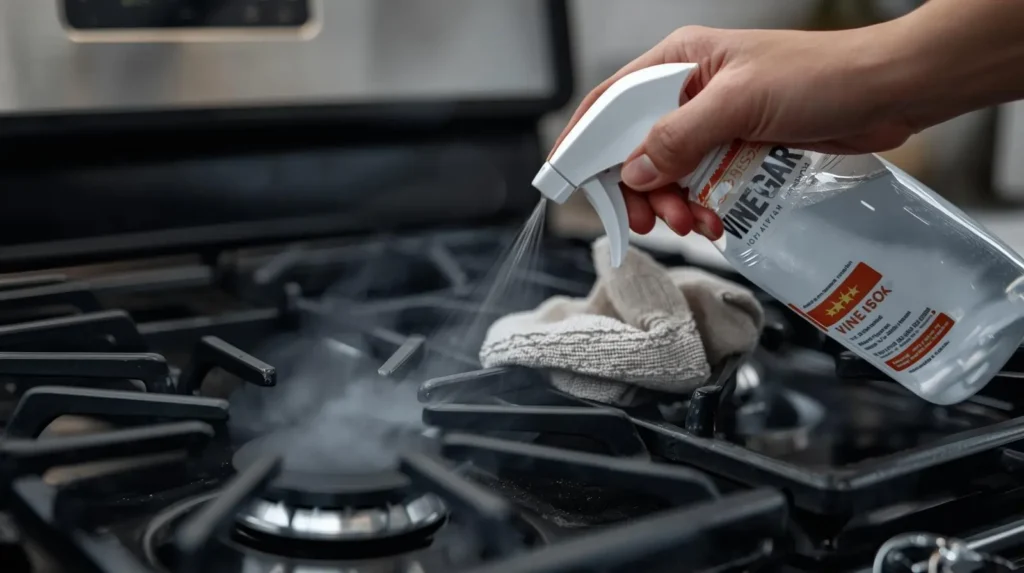
When my aunt reached for that plain bottle of white vinegar, I wasn’t convinced.
In my mind, vinegar belonged on salads or pickles, not on greasy stovetop burners.
But she smiled and said, “This is the cheapest cleaner you’ll ever own.” As I later learned, she was absolutely right.
Vinegar is slightly acidic, which means it can break down the sticky grease and stubborn mineral deposits that love to cling to burners.
Unlike store-bought sprays loaded with chemicals, vinegar is safe, non-toxic, and already sitting in most kitchen cabinets.
Best of all, it costs next to nothing. That’s why learning how to clean stovetop burners with vinegar is such a game-changer.
Whether you’re trying to clean gas stove burners with vinegar or freshen up an electric coil, this works like magic.
Suggested Read: I Tried the Ultimate Fall Cleaning Checklist | Here’s What Happened
How to clean stovetop burners with vinegar: What You’ll Need
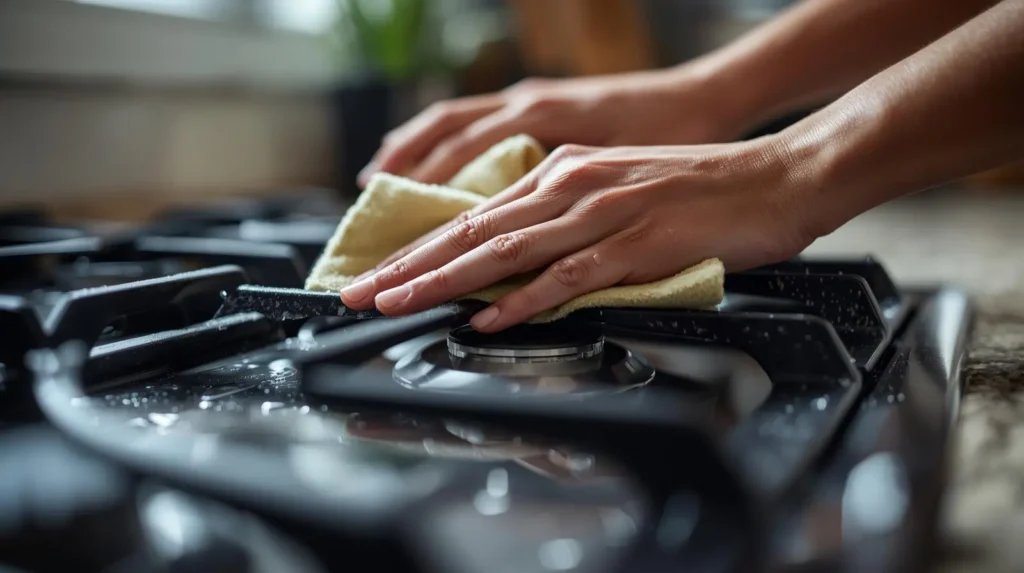
Before I could even ask what to do next, my aunt was already opening her kitchen cabinet.
Out came a big bottle of white vinegar, followed by an old toothbrush, a spray bottle, and a soft sponge.
To follow her exact method for how to clean stovetop burners with vinegar, here’s the simple kit you’ll want to gather:
- White distilled vinegar (the star ingredient)
- Warm water (optional)
- Baking soda (for stubborn, baked-on stains)
- Spray bottle (for even vinegar cleaning stovetop surfaces)
- Old toothbrush or soft brush
- Non-abrasive scrub sponge
- Microfiber cloth for drying
- A small pin or needle (to clear clogged burner holes)
- Gloves (optional, but useful)
With just these everyday items, you can clean gas stove burners with vinegar or refresh electric stove coils without harsh chemicals.
Suggested Read: How Do You Clean Outdoor Cushions Without Removable Covers!
How to clean stovetop burners with vinegar: Step-By-Step Guide
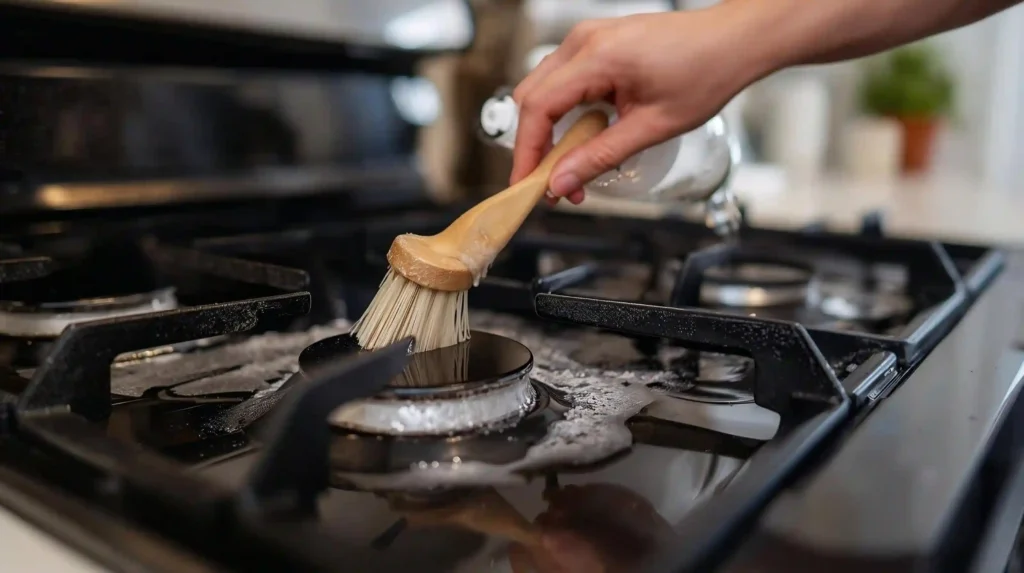
Step 1: Preparation
The Calm Before the Clean My aunt reminded me, “Never rush, and never clean a hot stove.” I waited for the burners to cool, then removed the grates, caps, and heads, laying them on a towel. Before you know how to clean stovetop burners with vinegar, set up a safe workspace. Protect countertops, gather your tools, and handle each part gently. This careful setup ensures the vinegar works effectively on stubborn grease. Even a simple vinegar cleaning stovetop method starts with good preparation.
Step 2: Soaking the Burners in Vinegar
We mixed equal parts warm water and vinegar, soaking the grates and caps. I added a little baking soda for tough residue, and the fizz showed the grime was loosening. This soak is the core of how to clean stovetop burners with vinegar. It works on gas burners and can also clean gas stove burners with vinegar naturally, softening even stubborn, baked-on stains in 20–30 minutes.
Step 3: Scrubbing Away the Grime
After soaking, I scrubbed with an old toothbrush. The burnt residue lifted, revealing shiny metal underneath. Baking soda on tough spots created a gentle fizz, acting as a natural abrasive. A small pin cleared clogged burner holes. This step shows how to clean stovetop burners with vinegar is so effective. It’s safe, chemical-free, and works as a natural stovetop cleaner.
Step 4: Rinsing and Drying
I rinsed all parts under warm water, then dried them completely with a microfiber cloth. Drying prevents rust and ensures proper burner function. Using vinegar this way makes vinegar cleaning stovetop burners safe and thorough, leaving them fresh and ready to use.
Step 5: Reassembling and Finishing Touches
After reassembling, the burners looked almost new. Flames ran evenly with no residue. Weekly vinegar wipes prevent buildup, and deep soaking monthly keeps them sparkling. Whether for gas or electric, how to clean stovetop burners with vinegar is a reliable, natural method that keeps your stove looking fresh without harsh chemicals.
Suggested Read: Is My House Too Dirty For A Cleaning Service? Real Facts!
The Transformation: Before & After
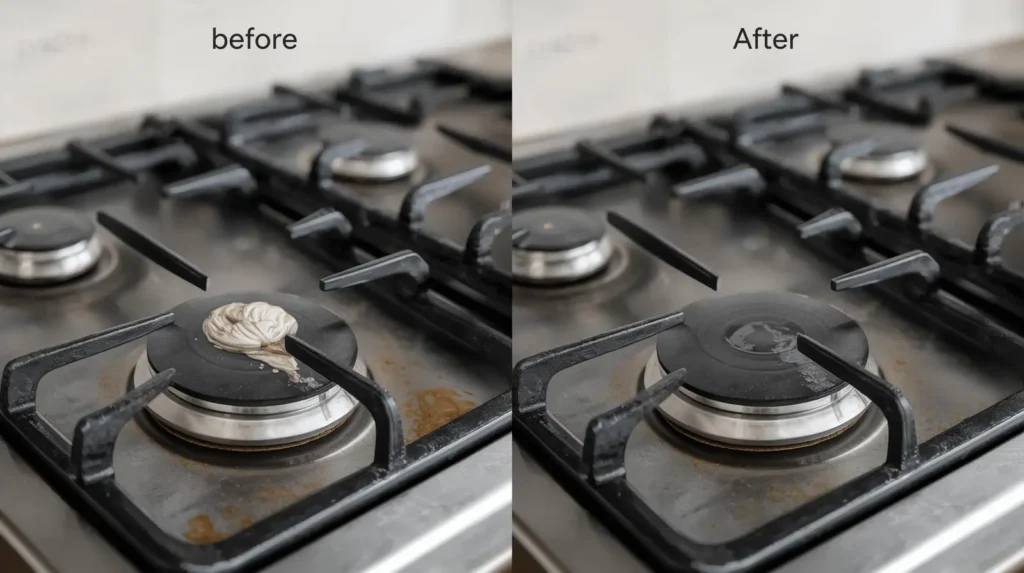
I stepped back and stared at the burners. What had looked dark, sticky, and hopeless now gleamed like new.
The burnt milk stain that had caused so much panic was completely gone. Even the smallest nooks, which I thought were permanently clogged, were sparkling.
This is exactly why knowing how to clean stovetop burners with vinegar is a game-changer.
Whether you’re using it to clean gas stove burners with vinegar or refresh electric coils, a simple soak, scrub, and rinse routine brings remarkable results.
Suggested Read: Why Does Malt Vinegar Smell Bad? Unmasking The Hidden Cause!
How to clean stovetop burners with vinegar: 5 Alternate methods
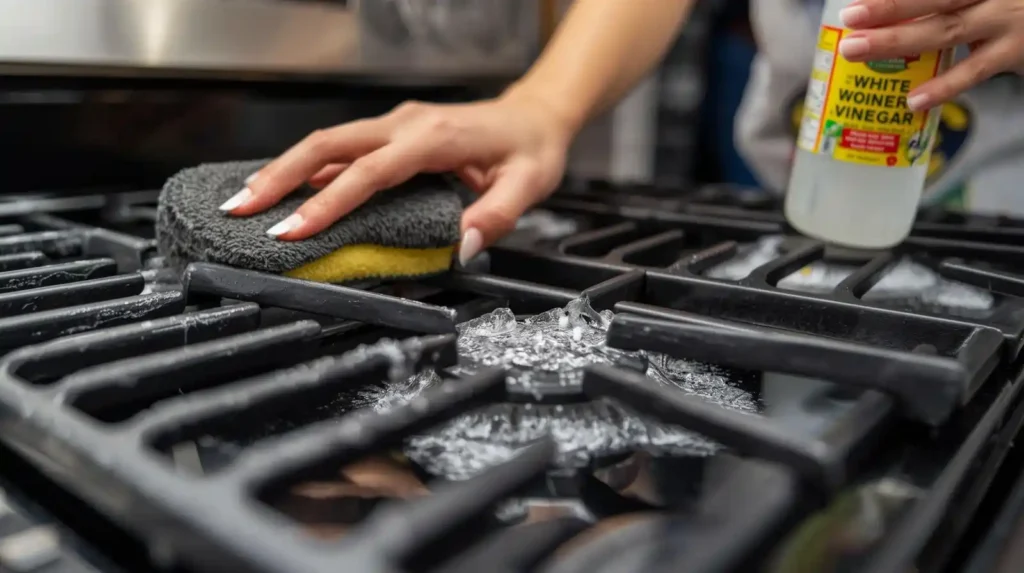
I never thought cleaning stovetop burners could be fun until last month. Hosting a small family brunch, I noticed my burners were grimy and dull.
Usually, I just use vinegar, but this time I wanted to try something unusual.
That’s when I stumbled upon five unique methods that changed my cleaning game.
1. Rice Water Magic
The first trick came from an old memory of my grandmother. I boiled rice and saved the leftover starchy water.
Curious, I soaked the burner grates in it. At first, it seemed odd; after all, how could rice water clean stubborn grime?
But 15 minutes later, the residue had softened noticeably. Using how to clean stovetop burners with rice water was surprisingly effective.
It’s gentle, natural, and makes scrubbing so much easier. Even the toughest burnt spots lifted without harsh chemicals.
2. Cream of Tartar Paste
Next, I experimented with cream of tartar. Mixing it with a little water created a paste, which I spread over the blackened spots on the burners.
Almost immediately, a fizzing reaction started, loosening baked-on grease.
I realized that using how to clean stovetop burners with cream of tartar paste isn’t just effective, it’s fun.
3. Clean Stovetop burner with Citrus Power
The third method was pure sensory delight. I took lemon halves and rubbed them over the burners.
The natural acid worked to break down grime, while leaving a fresh citrus scent in the kitchen.
This method shows that learning how to clean stovetop burners doesn’t always require chemicals.
Lemon acts as a natural cleaner, deodorizer, and brightener all at once.
4. Club Soda Lift on stovetop burners
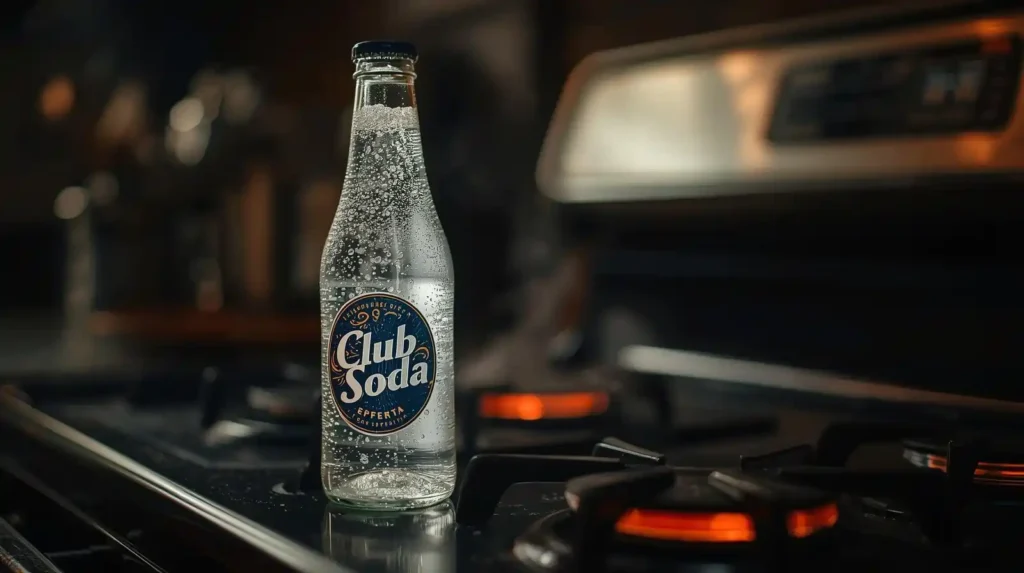
For particularly stubborn spots, I poured club soda directly onto the grime.
The carbonation and slight acidity helped lift burnt-on milk and food particles almost instantly.
Using how to clean stovetop burners with club soda is an unusual trick that’s surprisingly effective.
It’s one of those hidden hacks that many people overlook.
5. Compressed Air for Hidden Spots
Finally, for the tiny holes and hidden crevices, I grabbed a can of compressed air, normally used for keyboards.
A few quick bursts blew out crumbs, dust, and fine ash hiding in the burner ports.
Even this small step demonstrates a creative approach to how to clean stovetop burners.
It ensures every nook is spotless without disassembling the entire stove.
Suggested Read: Does Rice Vinegar Go Bad If Not Refrigerated Overnight?
can i use vinegar to clean stove top?
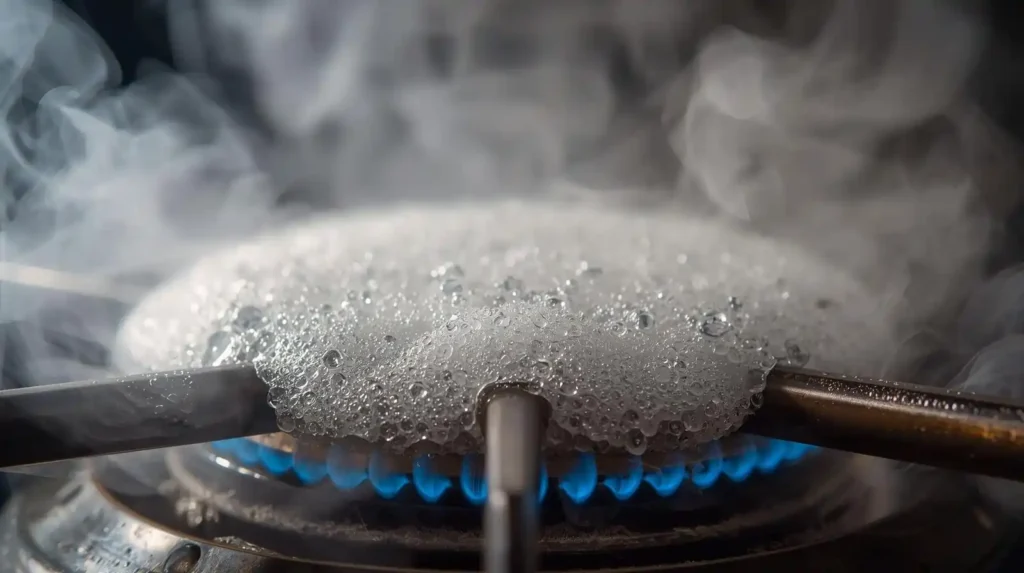
I remember the first time I spilled a sticky sauce on my stove. Panic set in, and I grabbed every cleaner in sight, only to make a bigger mess.
That’s when I remembered my grandma’s old trick: vinegar. Pouring a little on a cloth and gently wiping the burners felt almost magical.
The grease loosened, and the burnt spots softened before my eyes. It smelled sharp but natural
And I realized that yes, you absolutely can use vinegar to clean stove top surfaces. It’s simple, safe, and surprisingly effective.
how to clean electric stove burners with vinegar?
Electric burners always intimidated me. Those coils seemed impossible to clean without disassembling everything.
But one day, I poured a bit of vinegar over a cloth and dabbed at the stubborn grime.
The burnt-on residue started softening immediately. I let the vinegar sit for a few minutes, then gently scrubbed with a soft sponge.
Learning how to clean electric stove burners with vinegar became a lifesaver, turning a daunting chore into a quick, natural, and almost enjoyable ritual.
Suggested Read: Can I Add Vinegar To My Laundry For A Fresh Smell? Must Read
FAQS: How to clean stovetop burners with vinegar
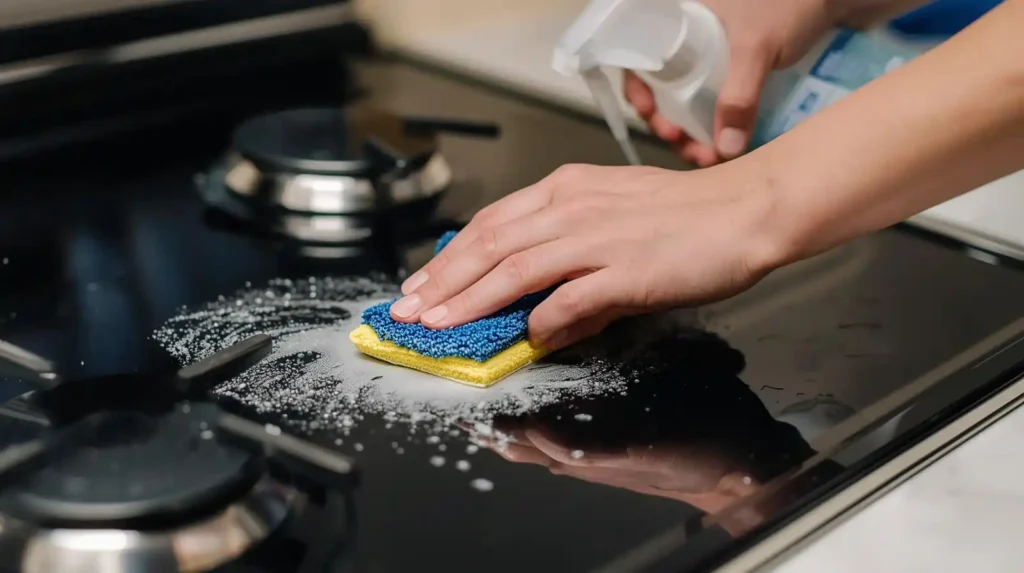
1. Can I use vinegar to clean all types of stovetop burners?
The first time I tried vinegar, I wondered if it would harm my electric coils. Surprisingly, it worked beautifully on both gas and electric burners. A little patience and gentle scrubbing make it a safe choice for almost every stovetop.
2. How long should I soak burners in vinegar?
I used to get impatient and try scrubbing immediately, but letting the burners soak for 20–30 minutes worked wonders. The grime softened on its own, making cleaning effortless. A soak really is the secret to sparkling results.
3. Can vinegar remove stubborn burnt-on stains?
I faced a stubborn milk spill once that had baked onto my burner for days. A combination of vinegar and a little baking soda fizzed away the toughest spots. It’s amazing how natural cleaners can do what chemicals often struggle with.
4. Is vinegar safe for electric stove burners?
When I first tried it on my electric coils, I hesitated. But using a damp cloth with vinegar, never pouring directly, made it safe and effective. After drying carefully, the burners looked almost new, no damage in sight.
5. How often should I clean my stovetop with vinegar?
I learned the hard way, letting grease build up only makes cleaning stressful. Now, a quick vinegar wipe weekly and a deeper soak monthly keep everything spotless. It’s become my favorite easy kitchen ritual.
Suggested Read: Why Does My House Smell Like Ammonia: 9 Surprising Causes!

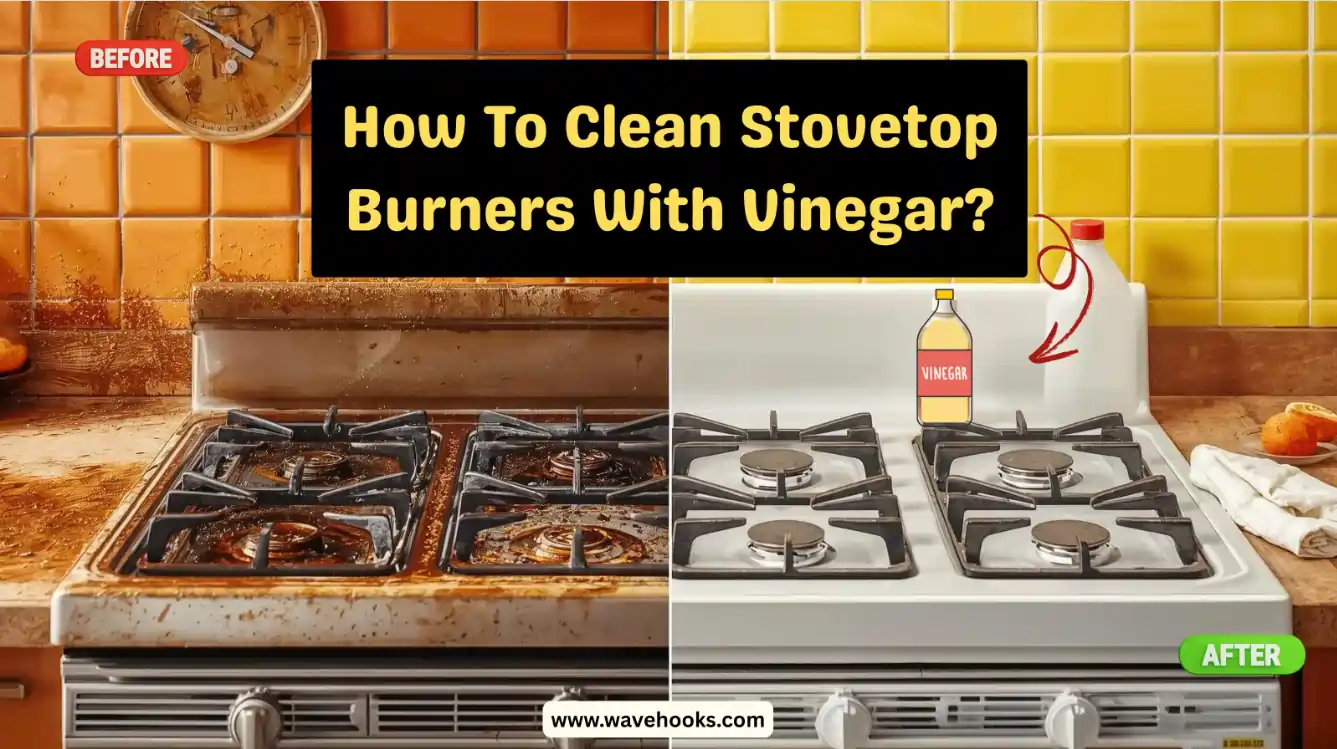






Wow, this is the ultimate stovetop intervention! Who knew vinegar, baking soda, and a toothbrush could work wonders? My kitchen looks like a model home now. The rice water trick is genius, and using club soda is like having a mini soda party for your burners. Seriously, ditch the harsh chemicals and embrace the fizz! This guide is a lifesaver – and maybe slightly over-eager, but in the best way possible.